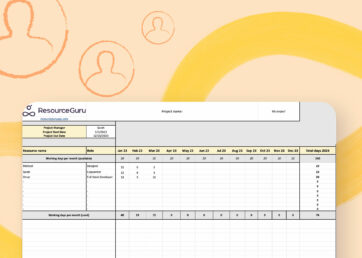Humans love seeing a 100% score, whether on a test, a report card, or even a film rating. We equate it with complete success and accomplishment, no room spared.
So, when it comes to your resource management, it seems logical to aim for 100% utilization and assign work that fills all of your team’s time. However, in our chase for the magic number, we forget that our resources are human. The purpose of a resource management plan is to ensure they are utilized in a way that is empowering, not exhausting.
Resource management plans are the foundation of your projects. Done right, they help you forecast your project needs, allocate the right people for the right job with buffer time built into their workday, and give you complete visibility into your team’s schedule, so you don’t overbook them.
The traditional thinking about setting up resource management plans for 100% utilization is flawed because it wrongly assumes that people will function at their full capacity every minute of every day.
In fact, if your resource management plan targets 100% utilization, you are more likely to fail. A 100% utilization goal is unrealistic, creates stress, and drives your most important resources—people—to the point of exhaustion and burnout. Instead, be proactive at the outset and schedule some breathing room so that they feel empowered to take a break without falling behind on a deadline.
In this article 📖
The problem: Chasing 100% utilization sets you up for failure
Let’s first consider what 100% resource utilization means. A resource management plan that allocates every available minute from a team member’s workday to a project assumes that an employee will be productive for that entire time. But that’s not realistic.
The first step is to acknowledge that your resources are humans, not machines. They need slack time—time to relax, innovate, and be creative—to have fun and produce their best work. Besides, as the pandemic demonstrated, a work-life balance is critical to an employee’s mental fitness. When they get sick or need time off to recharge or attend to personal and family commitments, the last thing they want to worry about is an impending deadline.
Gartner analyst Robert Handler points out that if your teams are more than 80% utilized, they are less productive and run the risk of making mistakes, causing delays, and driving up costs. Overbook your employees, and it will collapse your iron triangle—that is, negatively impact either budget, scope, or deadlines and result in poor quality work.
So, while you’re tempted to allocate your employees for 100% utilization and every billable hour, it only looks good on paper (or on a screen) and has serious consequences on the practical front.
Overbooked and exhausted employees
When overbooked employees are forced to power through their eight-hour days with intensive tasks, they will quickly burn out and reach a point of exhaustion. They are likely to resent work (and their employer) if they are too busy to learn a new skill or are constantly running late to their child’s soccer game.
Besides, research shows that there are “hard limits” to the number of hours a human brain can devote to deep-focus tasks. After three to four hours, our brain feels saturated and is ready to call it a day. That doesn’t mean an employee wastes the rest of their working hours. In fact, this is when employees want to catch up on less thought-intensive tasks like organizing files, attending meetings, and communicating progress on projects.
Often, brains get an opportunity to recharge by reading an article or chatting with a co-worker over coffee. After all, team building and connections at work play a major role in collaboration and the overall success of a project.
Poor quality work and project delays
When employees are constantly on the go and rushing to meet deadlines, the quality of work is bound to suffer. Even the most talented employees lose focus and make mistakes when they are tired and stressed out.
Gallup reported that burned-out employees are 63% more likely to call in sick and have 13% lower confidence in their abilities to perform well. Low motivation and frequent sick days put employees further behind, especially if they are overallocated. This impacts project dependencies, causing delays and roadblocks for other team members who are waiting on the first task to be finished.
As a result, your project timelines are affected, and you either turn in low-quality work, run up your costs by bringing extra resources on the project, or face major delays.


“Resource Guru has the perfect balance of simplicity and detail. It’s easy to see where issues might arise.”
Employee dissatisfaction and turnover
The Great Resignation has shown us that employees want a workplace where they can learn, thrive, and have fun. In fact, 65% of employees say the pandemic has altered their views on the role work should play in their lives. Employees are saying no to toxic workplaces that don’t value a work-life balance and continue to overbook their resources.
In a poll of executive leaders, 60% said they are “significantly concerned” about employee turnover. It’s not easy to replace talented employees. Finding the right talent is hard enough; there are significant expenses associated with paying recruiters and hiring and onboarding new employees. All because your resource management plan stretched employees too thin.
Customer churn
Employee burnout and turnover, delayed projects, and low quality work will naturally impact your bottom line. Unhappy customers will leave, adding customer churn to your pile of worries.
All the factors we mentioned above play a part, but it boils down to poor resource management—a major reason why 70% of all projects fail and 53% of all projects are delayed. Ultimately, you don’t just hurt your employee morale when projects go under; you are unable to show quick value to customers, fail to build trust with them, and earn a bad reputation.
The solution: Create a resource management plan that energizes your team
According to the State of Project Management Report 2021, poor resource management is among the top three challenges facing project managers. As a project manager, it’s a huge undertaking to plan, allocate, and schedule your resources in a way that makes use of the right skills to deliver the best quality on time.
But many companies, especially agencies, don’t even know their team’s utilization metrics. In HubSpot’s 2018 Marketing Agency Growth Report, only 58% of employers said they track utilization rates. And the ones that track make the mistake of targeting a 100% rate.
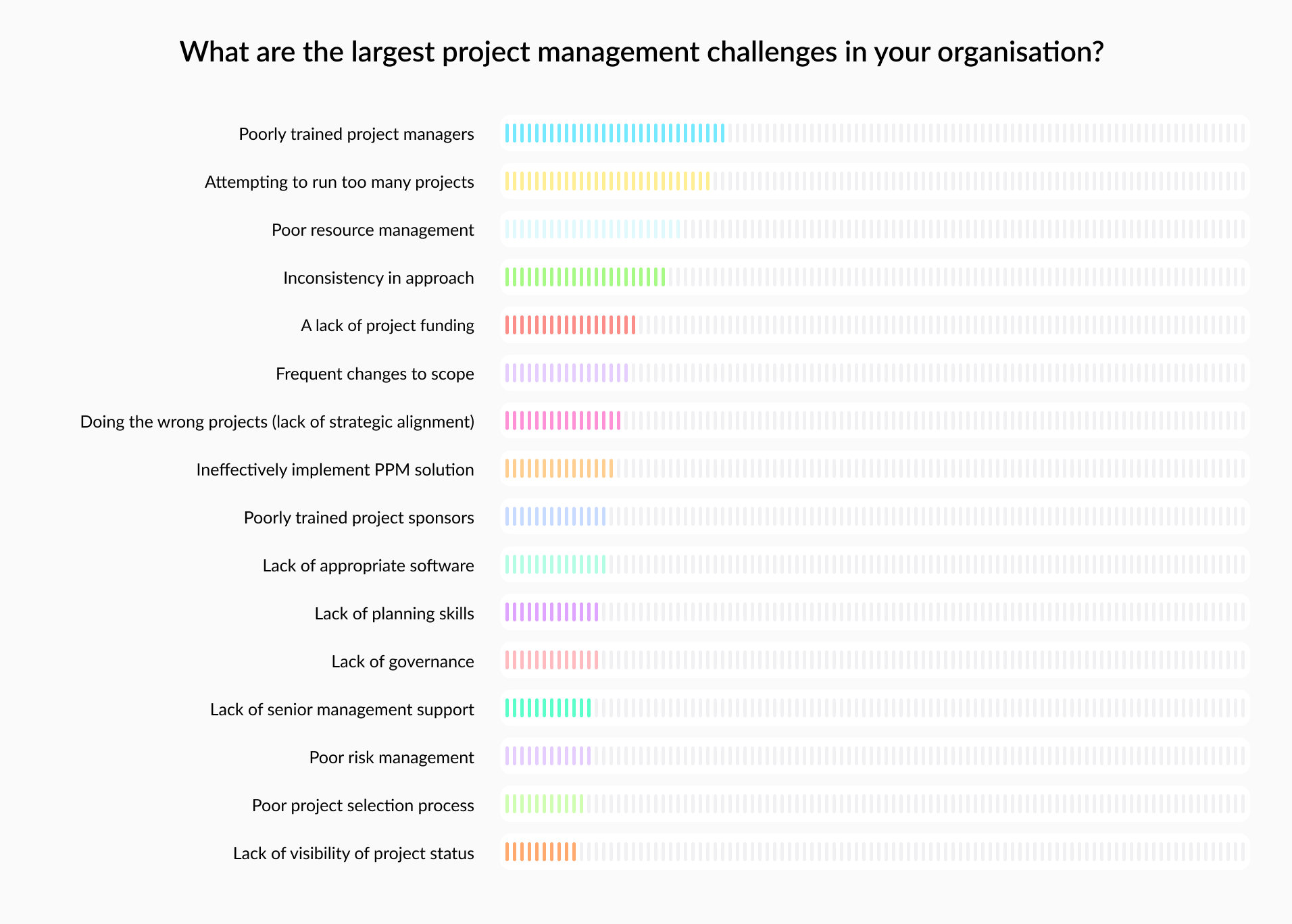
You need to take care of the human aspect in your resource management plan with a schedule that includes buffer time. When you do, other aspects like staffing, employee engagement, deadlines, and work quality will naturally fall into place
With this mindful “under-utilization,” you give your resource management plan the right start. Instead of aiming for 100% utilization, we suggest finding your own magic number to build in a couple of hours of “free time” into an employee’s workflow by adjusting your process.
But energizing your team is about more than just giving employees a few extra hours back. Here are six key components of an effective resource management plan:
Outline the goal of the project
A detailed project plan begins with a high-level statement of the project, what it hopes to accomplish, and the business value it will bring. Without a North Star goal to follow, your human resources could get lost along the way.
For example, your goal may be to teach employees a new skill with monthly instructional videos. Before you enlist available resources, document the key deliverables like the number of videos you want to produce, a training needs analysis to decide which training is most necessary, and interviews with subject matter experts.
Depending on the size of your organization, you can use something simple like a virtual whiteboard or a project management tool to set SMART (Specific, Measurable, Achievable, Realistic, and Time-bound) goals to create this single source of truth.
Map out the iron triangle: Budget, scope, and schedule
Once you have your goal in mind, the success of a project rests on the iron triangle of project management—the budget, scope, and schedule of the project. A change in one of the factors has an impact on the other factors.
To start strong and balance the three priorities, use resource forecasting and resource planning. Using our goal from the previous section—to teach employees a new skill with monthly instructional videos—your forecasted project team might include one instructional designer, three subject matter experts, and a technical expert. Each has different availability over the course of the month. If your designer is overbooked, they won’t be able to produce the videos on schedule. As a result, you either bring in a freelance designer (affect your budget), reduce the number of videos (change the scope), or move the deadline (impact the schedule).
Using a specialized resource management tool can help you proactively avoid overallocation. With a tool, you can generate project forecasting reports. You can see each team member’s availability, so it prevents overbooking and puts the hours you need from them on a waitlist. Your next step is to either unblock them from existing project work or find another resource.
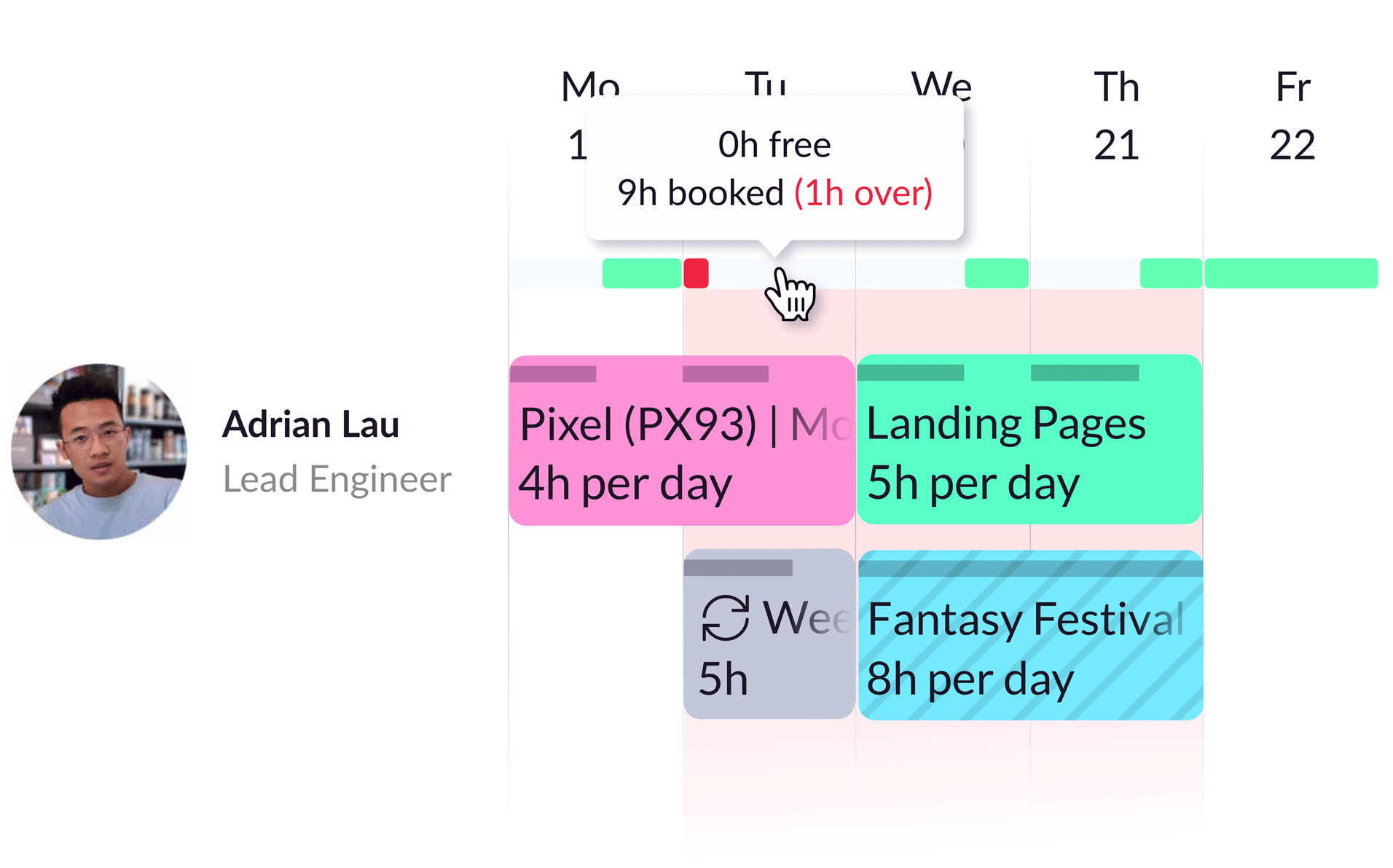
Define roles and responsibilities
A project can quickly go sideways if there is confusion about who is assigned to each task. When you define roles and responsibilities, you can use resource allocation to identify the best people for the needs of the project and make sure they are available when you need them.
Matching skill sets with tasks is an important part of resource allocation, and a resource management tool can help you filter the skills you are looking for with a clear view of the availability of specific resources.
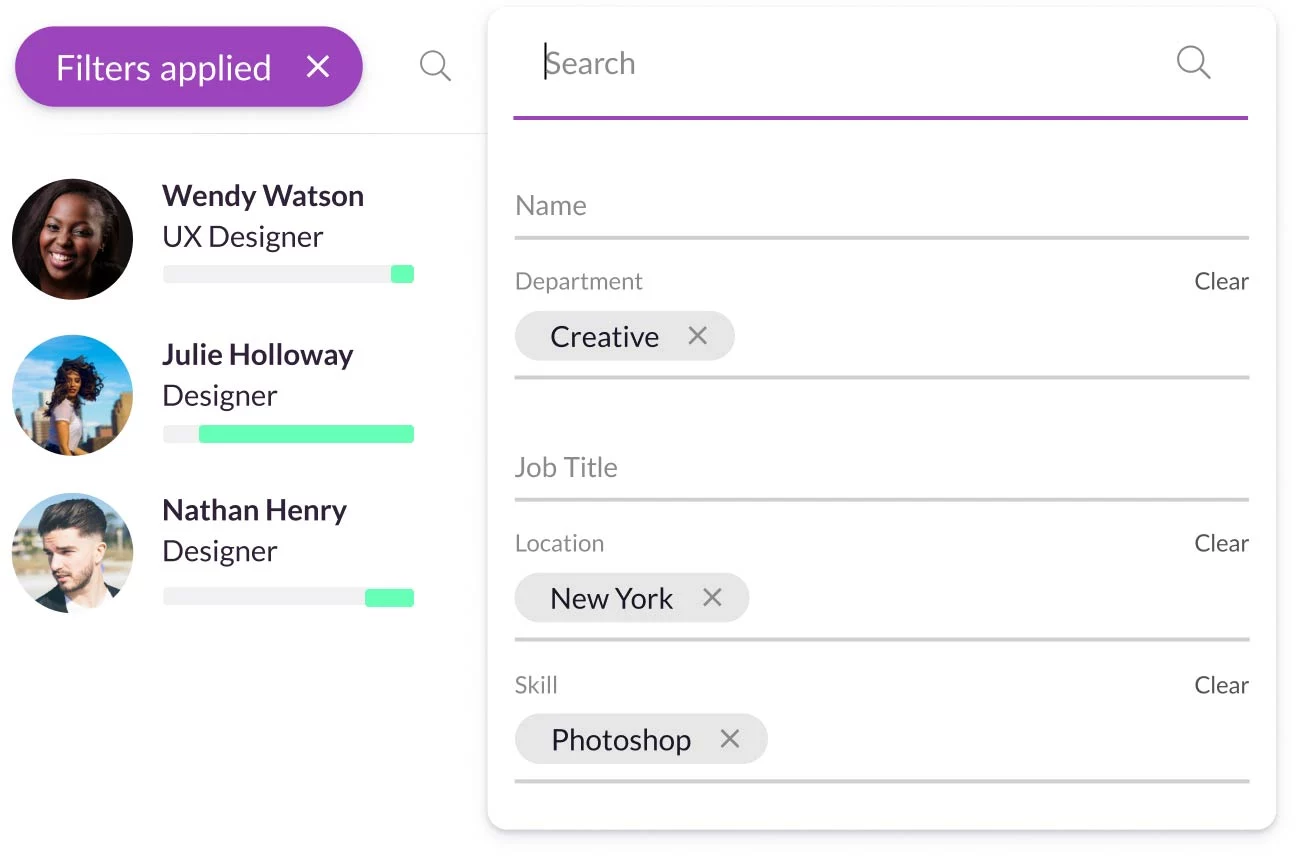
Once you allocate your physical resources, use a RACI matrix to build accountability and give teams a clear idea of the roles and expectations. In a RACI matrix, each person (or team) is assigned to a term on the matrix.
- Responsible — The person or team who completes the task or creates the deliverable
- Accountable — The person who delegates tasks and ensures the project stays on track
- Consulted — Usually, it’s the team that’s comprised of stakeholders who provide input and feedback
- Informed — The group that typically involves heads of departments or senior leadership who stay in the loop but are not involved in day-to-day decision-making
Identify training and development needs
Not all of your resources will be ideal or available for the project at hand. You may need to train people or upskill them before you can schedule them for a project.
For example, a team member interested in the L&D space may opt to take a quick course on making an instructional video, but you need to account for that time. Here, a resource management tool comes in handy to check how much an employee is already utilized and to aid your planning process. If employees are overbooked, there’s no allowance for them to learn a new skill, even if it will benefit them and the project team.
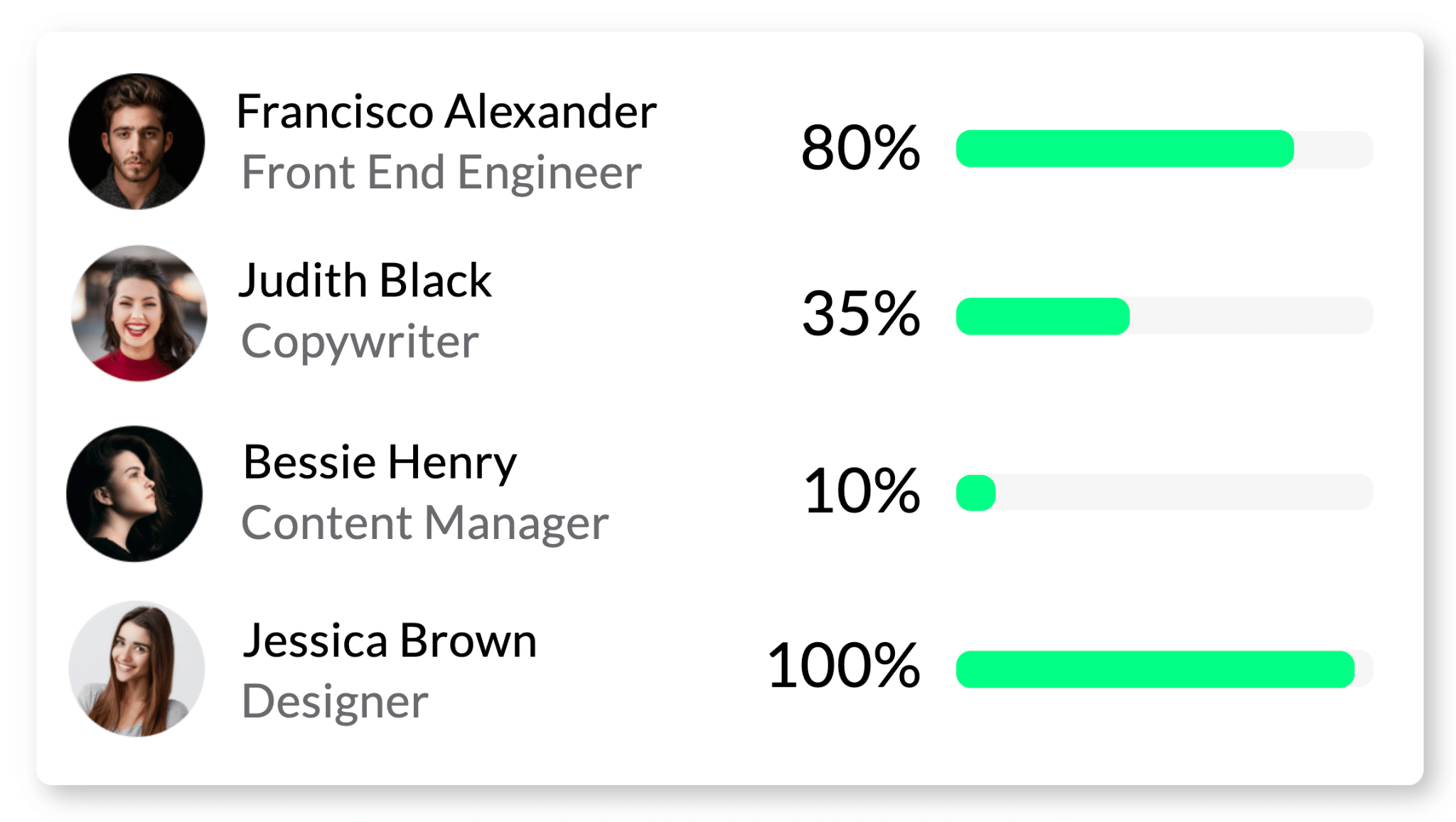
Account for external vendors and contractors
Occasionally, and if your budget permits, you will need to hire contractors or freelancers for specific projects, especially if you have a waitlist on an employee’s availability. A project resource management software helps you store, archive, and unarchive freelancer info, so you can include them in your schedule as needed without starting over or having to hunt down contact details.
Measure project performance
Key performance indicators (KPIs) measure the success and efficiency of your resource management plan, but that data can be hard to come by. In fact, 50% of respondents in a survey reported that they did not measure real-time project KPIs.
When you measure KPIs against your project forecast reports, you gain insight into your project schedule and status, that is, the tasks that are on track and the tasks that are in danger of stalling. With this comparison, you can identify bottlenecks early and use resource smoothing techniques to even out workloads. For example, you may need to bring in two instructional designers instead of one to meet your video production goal. By adjusting your resources, your project will run smoothly to the finish line.
Use a resource management tool to streamline your process
Creating a fail-proof resource management plan isn’t easy. But the right tool can help alleviate stress and boost your project success rate by giving you a bird’s-eye view of your resource availability.
Solve your resource management problems with a fully-featured free trial of Resource Guru.





